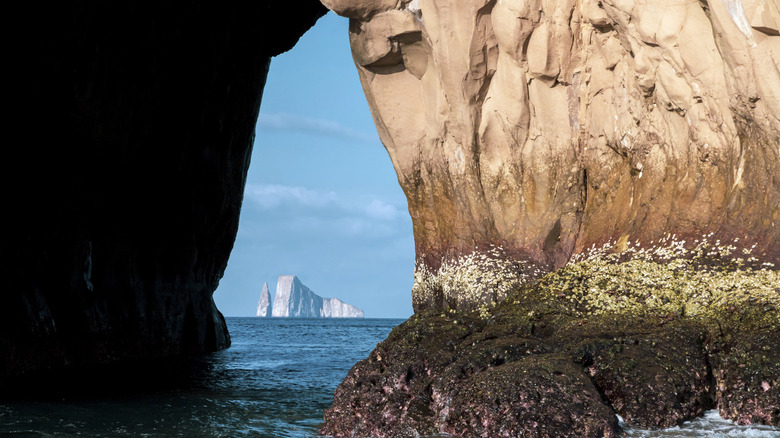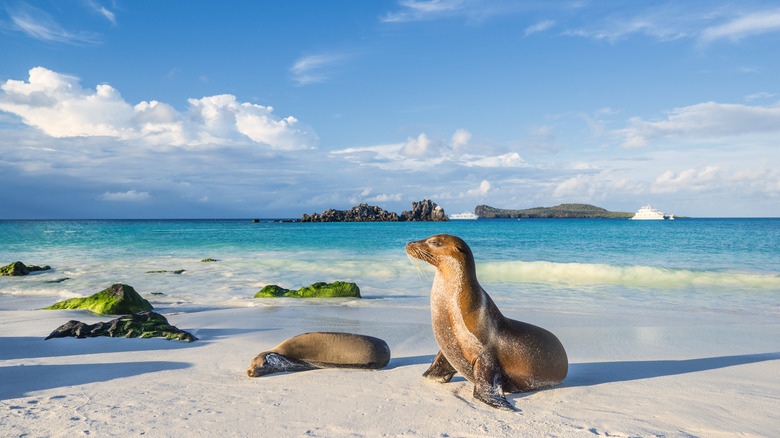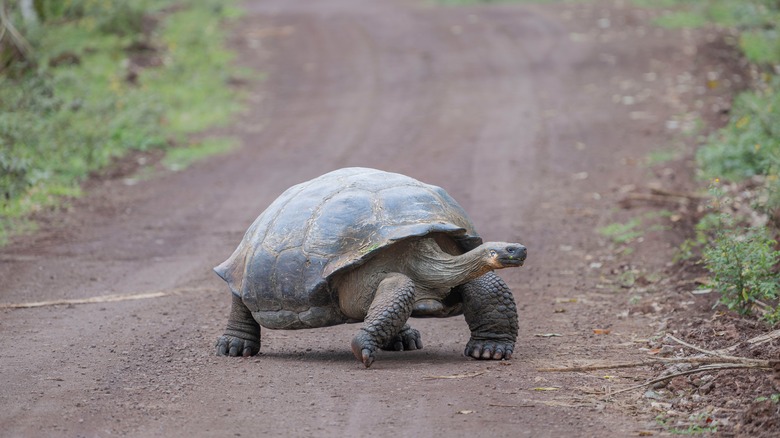The 'Near Perfect Family Destination' And Wildlife Wonderland With Snorkeling Bays And Lava Moonscapes
Thanks to its breathtaking landscapes and resident population of giant tortoises, penguins, marine iguanas, and blue-footed boobies — many of which are unafraid of humans — the Galápagos Islands are hugely popular with nature lovers. Lonely Planet named the archipelago to its list of the five best wildlife-watching destinations in the world, and the islands were also featured in the National Geographic Bucket List Family Travel book, published in 2024. So what, exactly, is so appealing about the island chain that's located hundreds of miles off the coast of Ecuador — and what's the best way to plan a trip there?
In short, whether you're going solo or traveling with kids, it's all about wildlife encounters and outdoor adventures. The Galápagos are vast in size, extending over 17,000 square miles of the Pacific Ocean. The archipelago was formed by volcanic activity, and still has active volcanoes today, resulting in lunar-like landscapes, dramatic rock formations, and clear blue bays with abundant marine life. Most visitors only see a fraction of the archipelago on a single visit; opportunities for hiking, snorkeling, and interacting with animals are practically endless. Learn more about how to get the most from your first trip to the Galápagos Islands.
Spot blue-footed boobies and snorkel with sea lions
Many travelers visit the Galápagos on a one-week cruise, though land-based tours, which are often more budget-friendly, are also popular. Travel experts recommend a minimum of five days for all visitors, partly because the archipelago is huge, and it takes time to travel between islands. Whether you're following a set itinerary or planning your adventure independently, there are some key highlights to prioritize.
San Cristobal Island is the only place in the archipelago where you can see three species of booby — the iconic blue-footed booby, as well as the red-footed and Nazca — in one setting. It's also the home of Galapaguera de Cerro Colorado, a breeding center for endangered giant tortoises (free admission). You'll see more giant tortoises at Charles Darwin Research Station on Santa Cruz Island (free admission). Snorkel with sea lions and walk through a sea bird colony on Española Island, and explore lava reefs and spot baby sea lions on Mosquera Islet. If you're excited for up-close wildlife encounters, read about the best time and place to swim with turtles in the Galápagos Islands.
Plan a trip to the Galápagos
Any trip to the Galápagos requires organization and planning. Most travelers arrange a tour (cruise or land-based) ahead of time, then schedule their flights from Quito or Guayaquil (in mainland Ecuador) to the airports on Baltra Island (GPS) or San Cristobal Island (SCY). Since most of the Galápagos is a national park, all visitors need to pay the park's entrance fee on arrival ($200 per person, or $100 for kids under 12).
Prices vary widely, but the average cost of a 5-day cruise in the Galápagos is $5,000 per person, while a land-based tour of the same duration costs from $2,500 to $4,000. There are deals to be found in early December, early January, and September, and the most expensive rates are charged around major holidays like Christmas and Easter. Keep in mind that most cruises include full board, including meals and soft drinks, but there may be a fee for extras like alcoholic beverages or special excursions, like diving. Ready to start planning a once-in-a-lifetime trip? Find out about the five best Galápagos Islands cruises, according to reviews.


